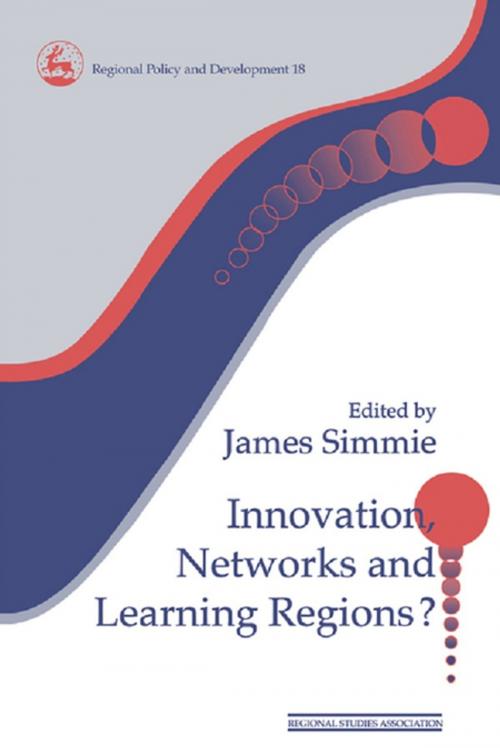Innovation Networks and Learning Regions?
Nonfiction, Art & Architecture, Architecture, Planning, Business & Finance, Economics| Author: | James Simme | ISBN: | 9781134996209 |
| Publisher: | Taylor and Francis | Publication: | August 2, 2004 |
| Imprint: | Routledge | Language: | English |
| Author: | James Simme |
| ISBN: | 9781134996209 |
| Publisher: | Taylor and Francis |
| Publication: | August 2, 2004 |
| Imprint: | Routledge |
| Language: | English |
Innovation, Networks and Learning Regions? address key issues of understanding in contemporary economic geography and local economic policy making in cities and regions in the advanced economies.
Developing the idea that innovation is the primary driving force behind economic change and growth, the international range of contributors stress the importance of knowledge and information as the 'raw materials' of innovation. They examine the ways in which these elements may be acquired and linked through networks, and demonstrate that there are empirical examples of innovative areas which do not have highly developed networks yet appear to be relatively successful in terms of local economic growth. In so doing, they raise crucial questions about the ways in which regions or localities might be described as truly 'learning' areas, and about the sustainability of future economic and quality of life success based on innovation and high-technology.
Innovation, Networks and Learning Regions? address key issues of understanding in contemporary economic geography and local economic policy making in cities and regions in the advanced economies.
Developing the idea that innovation is the primary driving force behind economic change and growth, the international range of contributors stress the importance of knowledge and information as the 'raw materials' of innovation. They examine the ways in which these elements may be acquired and linked through networks, and demonstrate that there are empirical examples of innovative areas which do not have highly developed networks yet appear to be relatively successful in terms of local economic growth. In so doing, they raise crucial questions about the ways in which regions or localities might be described as truly 'learning' areas, and about the sustainability of future economic and quality of life success based on innovation and high-technology.















